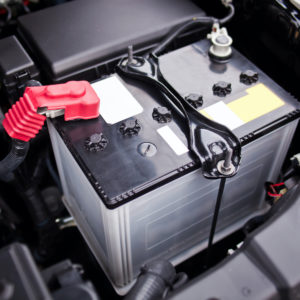Are you sick of your car battery dying on you even when you seldom get the chance to drive? One way to fix this is to use trickle chargers.
What is Trickle Charging?
A trickle charger recharges car batteries over time, preventing them from draining. It takes longer because the charger has a much lower power output than its conventional counterpart.
Trickle chargers are commonly used to juice up batteries that don’t see frequent use, supplying them with weak yet steady charges to keep them from dying. After all, batteries can lose their charge over time even when they’re not in use.
In addition, because the charge from trickle chargers is weak, the odds of them overcharging or damaging a car battery are lower.
There’s significantly less stress on the car battery, which makes it last longer. The tradeoff is you’ll need to factor in the extremely lengthy charging times before driving.
Trickle Charging Pros: Why Is It Good for Car Batteries?
Even though the process of recharging your car battery takes longer with trickle chargers, there are a lot of benefits that come with using them. Here are some of the ways using one can help you power your vehicle.
Convenience
One of the best parts about using a trickle charger to power up your car battery is how you can leave it charging overnight.
You won’t have to watch over your battery as it charges. You can even leave it powering up while it’s not in use for maximum convenience.
In addition, trickle chargers are also exceptionally easy to set up and use. The tradeoff is it takes a lot longer to charge than your regular battery charger. Most people don’t mind it because trickle charging is good for the car battery in the long run.
Prolongs Battery Life
Trickle charging also increases your car battery’s longevity by keeping it charged. When a battery uses or loses all its power, its service life decreases. If you have an AGM battery or an Optima battery you need to trickle charge it as well.
Fortunately, trickle charging a car battery reduces the likelihood of it emptying.
Good Value-For-Money
Last but not least, trickle chargers offer a lot of value for money. Because trickle chargers can be used at home, you don’t have to pay professionals to recharge your battery.
Similarly, the longer a battery lasts, the less money you’ll have to spend on maintenance and recharging it.

How To Use A Trickle Charger For A Car
Knowing what a trickle charger is and why they’re helpful is one thing, but knowing how to set them up and use them is another thing entirely. The process usually involves the following steps.
Match the Power Specifications of the Car Battery
Every car battery has power specifications, and you must adjust your charger accordingly. Use its interface to match your battery’s specs.
Match the values so that they match the middle range of the values listed on the car battery. If you don’t match the specifications properly, you run the risk of damaging the battery or even causing fires due to overcharging.
Secure Your Vehicle
Park your vehicle someplace safe and isolated, preferably with a roof over it like your garage. Make sure there are sockets nearby because you’ll need to plug in the trickle charger.
Ground the Trickle Charger
After adjusting the charger and ensuring the vehicle is in a great place for charging, the next step is to ground the trickle charger. Attach its grounding clip to the vehicle’s frame, someplace clean and clear like the undercarriage.
Grounding is important because it diverts any electrical currents in the charger, minimizing the risk of power surges and electrocutions.
Attach the Connectors to the Car Battery
Now that the trickle charger has been grounded, attach the charger’s red clip to the car battery’s positive terminal. Similarly, attach the charger’s black clip to the negative terminal.
Ensure both of these clips are securely attached without touching them. Also, make sure that your trickle charger is still set to “off” to avoid any unwanted shocks. You’re not done setting the charger up, after all.
Connect the Trickle Charger to an Outlet
After connecting the charger and the battery, connect the former to a power source. Make sure the charger is still off before plugging it in.
Let the Car Battery Charge
After you’ve confirmed everything is in the right place, you can switch the charger on to let it recharge your car battery. You can leave the trickle charger on overnight, but it wouldn’t hurt to check on it now and then to make sure it’s working properly.
Keep a sharp eye out for irregularities like flying sparks, crackling noises, or bubbling coming from the battery. Trickle charging shouldn’t cause issues like this because of its small power output, so these signs might suggest something is wrong.
Unclip the Connectors
Finally, once your car battery is all powered up and ready to use, you can unplug the charger and unclip the connectors.
After removing the clips, unplug the trickle charger and set it aside. With the battery fully charged, your vehicle should be ready to drive.
Any information provided on this Website is for informational purposes only and is not intended to replace consultation with a professional mechanic. The accuracy and timeliness of the information may change from the time of publication.


















